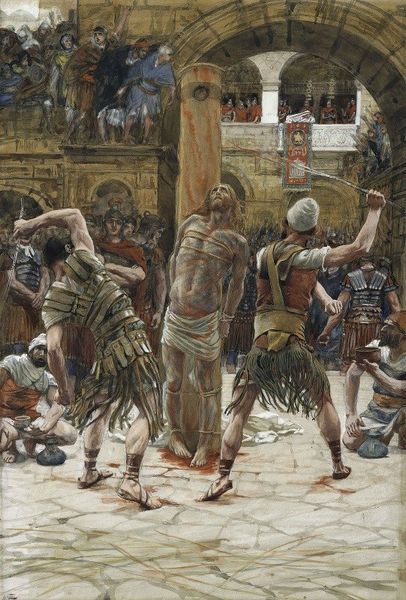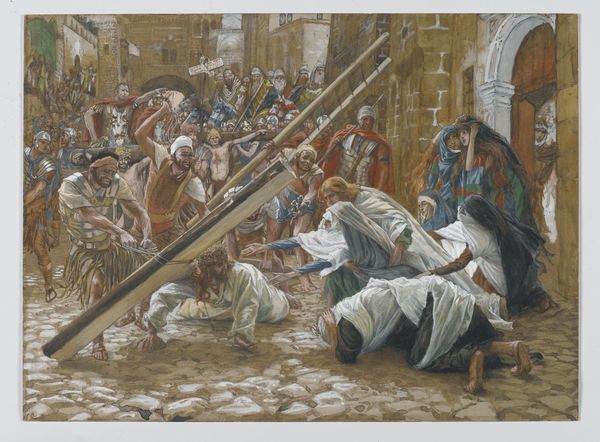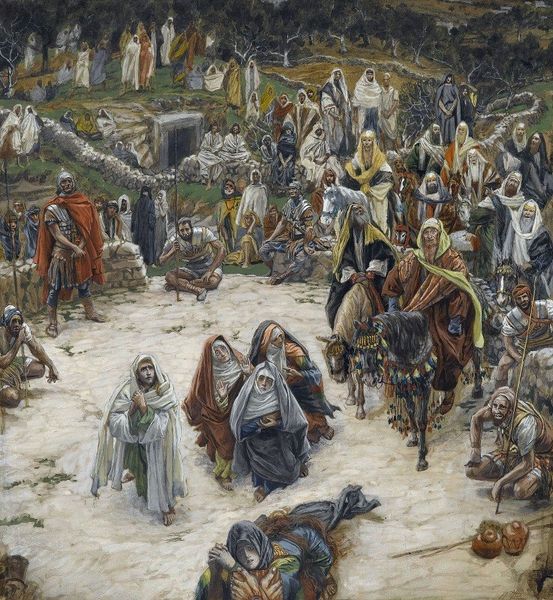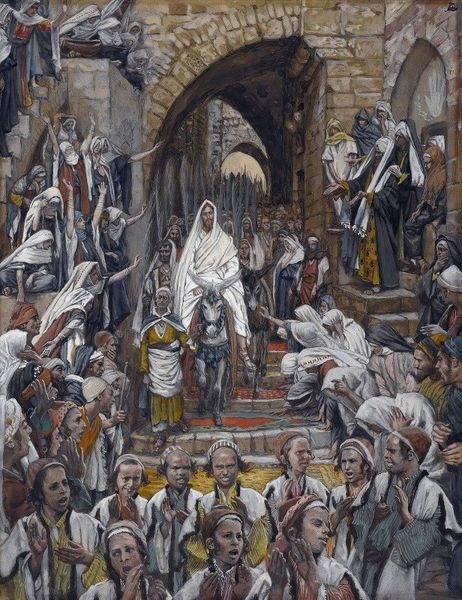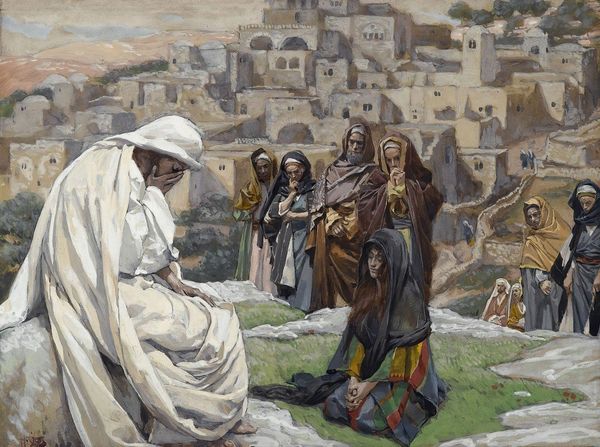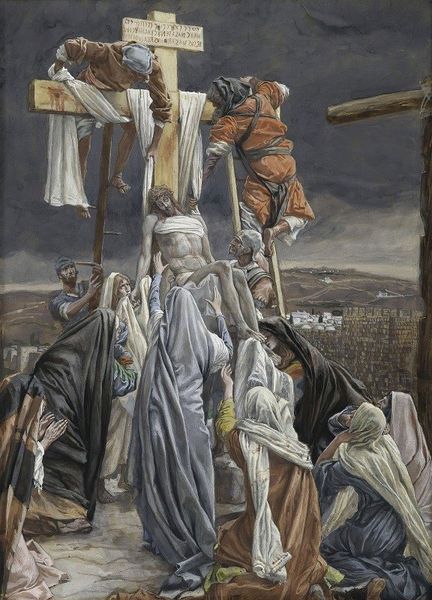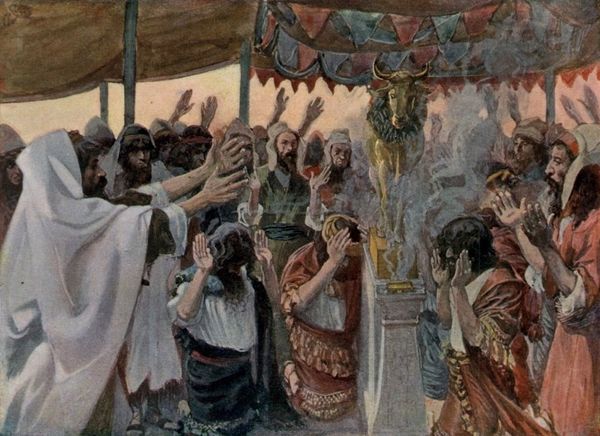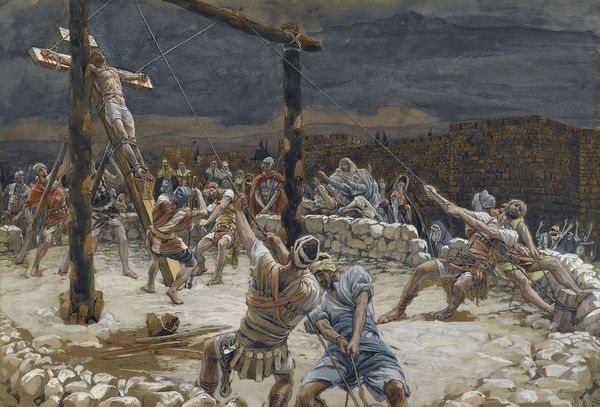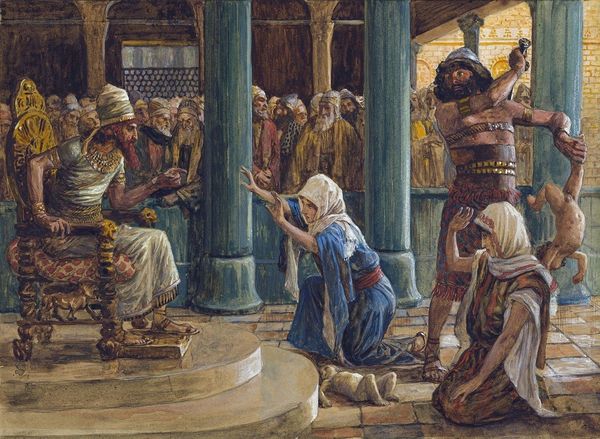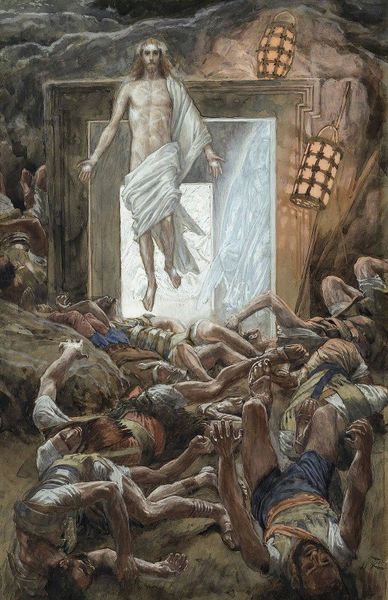
Copyright: Public Domain: Artvee
James Tissot painted "A Holy Woman Wipes the Face of Jesus" during the late 19th century. This work offers a window into the cultural and religious sentiments of its time, but we have to remember that it was made in France, not in ancient Judea. Tissot’s image presents a scene of compassion amidst cruelty, drawing upon the biblical narrative of the Passion. The painting would have resonated with the rising social and religious conservatism present in France, particularly in the wake of political and social upheavals such as the Franco-Prussian War and the Paris Commune. The painting's detailed realism invites viewers to engage emotionally, reinforcing the moral and spiritual lessons. The artist positions the viewer as a participant in the scene, implicated in the suffering of Jesus. The act of Veronica wiping Jesus's face becomes a symbol of empathy and human decency. Through this work, Tissot invites reflection on Christian values. As historians, we can consult theological texts, social histories, and even the journals of the artist to gain a deeper appreciation of the painting's cultural context. The image itself becomes a site of social and religious meaning, contingent on the beliefs and values of its time.
Comments
No comments
Be the first to comment and join the conversation on the ultimate creative platform.
